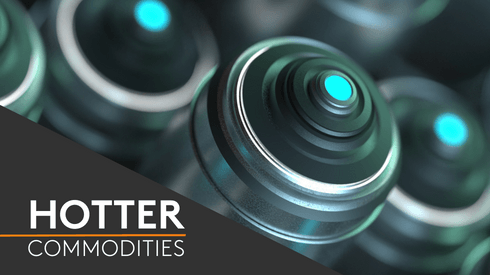Battery-grade graphite remains on the list of strategic raw materials in the final version of the European Commission’s Critical Raw Materials Act (CRMA), but a provision has been added explicitly requiring the strategic role of synthetic graphite to be re-assessed after three years. The piece of legislation, published on Friday May 3, is due to come into effect on May 23.
Industry and market participants welcomed graphite’s inclusion in the final list, given its critical relevance in the push for electrification.
“We welcome the recognition of graphite – battery grade, natural and synthetic, as strategic for the European Union (EU) in particular in light of the fact that due to technical performance reasons currently all battery types contain a mix of both types [natural and synthetic] graphite at a ratio varying between 40-60%,” Corina Hebestreit, secretary general of the European Carbon Graphite Association (ECGA), told Fastmarkets.
Regarding the provision on the future re-assessment of the strategic nature of synthetic graphite, Hebestreit stressed that all raw materials are reviewed every three years with regards to their criticality. It is not surprising that the EC reserved the possibility to assess the strategic nature of any raw material depending on geopolitical, economic and technological developments, she added.
“We are confident that synthetic graphite will remain a strategic material in the CRMA because of its essential role in the green transition,” Burkhard Straube, CEO of anode material producer Vianode, said.
But Fastmarkets battery raw materials analyst Georgi Georgiev called the explicit mention that the EC will assess whether synthetic graphite will remain in the list of strategic raw materials “alarming” because of the strong opposition within the EU to adding synthetic graphite into the list in the first place.
Nevertheless, Georgiev remains skeptical of the potential removal of synthetic graphite from the list in the future given the consumption levels of synthetic graphite for batteries and electrodes.
Resilience, diversification and circularity
Both natural and synthetic graphite is used in batteries for electric vehicles (EVs) and at the moment it is mostly processed into active anode material in China.
China currently dominates the supply chain of anode material supply, accounting for 97% of Asian anode material exports, according to data gathered by Fastmarkets’ research team.
“Currently anode demand of European battery plants is mostly for synthetic graphite anode materials, which account for 70-80% of European anode material demand, with almost 100% of this supply originating from China,” Georgiev said.
Recent investment in China’s synthetic graphite industry has seen that material take market share from natural graphite, which in turn has faced a gloomy period of extended bearish demand.
Fastmarkets analysts forecast graphite demand from the EV sector in the EU will surpass 515,000 tonnes by 2030.
The EC originally added synthetic graphite to its list of strategic raw materials last November. This followed China’s decision to impose at the end of last year export controls on a number of synthetic and natural graphite products.
China’s imposition of export controls has heightened the need for Europe to look closely at the resilience, diversification and circularity of its graphite supply chain, which is highly dependent on China.
Market experts highlighted that a clear regulatory framework is needed to develop a resilient supply chain for anode production in the EU.
“Extensions and modifications of existing production as well as new greenfield projects are in the pipeline but need to be supported by the Critical Raw Materials Act or the Net Zero Industry Act,” Hebestreit told Fastmarkets.
“As long as the resilience of the EU economy remains a prime aim, we are confident that graphite projects of all types will remain strategic for the coming years, also because graphite is of high importance for example for the production of fuel cells, silicon production and solar panels as well as steel recycling,” Hebestreit added.
Straube said: “Synthetic graphite is a high-performance solution that is the most important anode material for lithium-ion batteries, today and in the foreseeable future. Battery-grade synthetic graphite is highly scalable and will support the EU Green Deal Industrial Plan.”
But uncertainty on the strategic role of synthetic graphite could potentially hamper the development of a local supply chain in Europe, according to Fastmarkets’ Georgiev.
“There will still be significant demand for synthetic graphite production, and it remains unclear what the effect would be on the initial financial support for a [synthetic graphite] project if after the re-assessment synthetic graphite is no longer considered strategic,” Georgiev said.
Recycling of graphite is at an early stage
The CRMA outlines for the strategic minerals in its list benchmark targets to be achieved in terms of production, refining and recycling. Notably, in the latest version of the act, the recycling benchmark target has been increased to 25% from 15% as a portion of the overall capacity.
However, recycling of graphite seems to be still at an early stage of development.
“Regarding the recycling of graphite, taking graphite from batteries and getting it back in the form of spherical graphite it is what you want to achieve. At the moment we are doing it in labs with some partners and we are getting some positive results. There is still more work that needs to be done to see if it is commercially viable,“ Kunal Sinha, global head of recycling at Glencore, told Fastmarkets on the sidelines of the FT Future of the Car Summit in London on May 8.
Want to find out more about our critical minerals price data, forecasts and market insights? Head to our critical minerals hub today.






